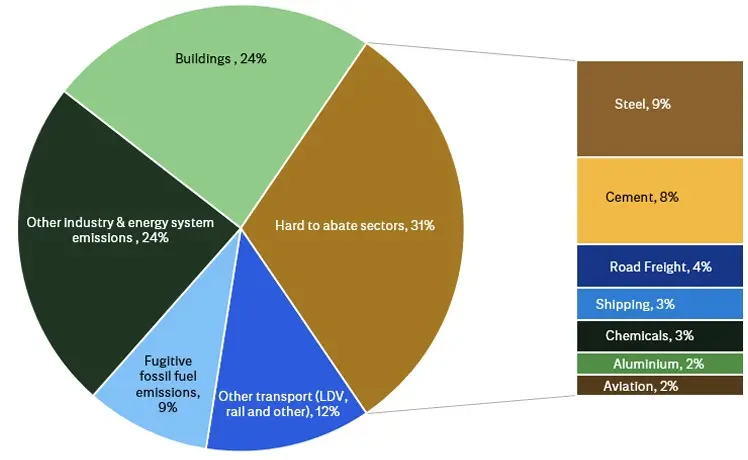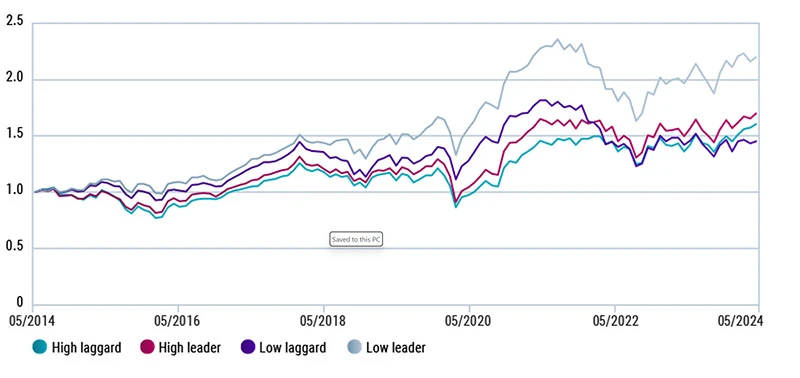Disclaimer Robeco Switzerland Ltd.
The information contained on these pages is solely for marketing purposes.
Access to the funds is restricted to (i) Qualified Investors within the meaning of art. 10 para. 3 et sequ. of the Swiss Federal Act on Collective Investment Schemes (“CISA”), (ii) Institutional Investors within the meaning of art. 4 para. 3 and 4 of the Financial Services Act (“FinSA”) domiciled Switzerland and (iii) Professional Clients in accordance with Annex II of the Markets in Financial Instruments Directive II (“MiFID II”) domiciled in the European Union und European Economic Area with a license to distribute / promote financial instruments in such capacity or herewith requesting respective information on products and services in their capacity as Professional Clients.
The Funds are domiciled in Luxembourg and The Netherlands. ACOLIN Fund Services AG, postal address: Leutschenbachstrasse 50, CH-8050 Zürich, acts as the Swiss representative of the Fund(s). UBS Switzerland AG, Bahnhofstrasse 45, 8001 Zurich, postal address: Europastrasse 2, P.O. Box, CH-8152 Opfikon, acts as the Swiss paying agent.
The prospectus, the Key Investor Information Documents (KIIDs), the articles of association, the annual and semi-annual reports of the Fund(s) may be obtained, on simple request and free of charge, at the office of the Swiss representative ACOLIN Fund Services AG. The prospectuses are also available via the website https://www.robeco.com/ch.
Some funds about which information is shown on these pages may fall outside the scope of CISA and therefore do not (need to) have a license from or registration with the Swiss Financial Market Supervisory Authority (FINMA).
Some funds about which information is shown on this website may not be available in your domicile country. Please check the registration status in your respective domicile country. To view the Robeco Switzerland Ltd. products that are registered/available in your country, please go to the respective Fund Selector, which can be found on this website and select your country of domicile.
Neither information nor any opinion expressed on this website constitutes a solicitation, an offer or a recommendation to buy, sell or dispose of any investment, to engage in any other transaction or to provide any investment advice or service. An investment in a Robeco Switzerland Ltd. product should only be made after reading the related legal documents such as prospectuses, annual and semi-annual reports.
By clicking “I agree” you confirm that you/the company you represent falls under one of the above-mentioned categories of addressees and that you have read, understood and accept the terms of use for this website.
Sustainable investing
Transition finance
Transition finance invests in less sustainable companies to help them adopt lower-carbon and more nature-positive practices. Unlike sustainable investing, which focuses on ‘green’ companies, transition finance targets those progressing from ‘brown’ to ‘green.’
It is often said that if net zero is the destination, then transition is the journey. Transition investing is the principal means of achieving net zero emissions in order to meet the Paris Agreement temperature goals and limit global warming.
This is where the real change is taking place as companies and sectors adjust their processes. Transition investing opens up opportunities for investments in industries where emissions are hard to abate, such as steel or cement, which would not be covered by pure SI.
Hard-to-abate sectors are responsible for one-third of energy-related greenhouse gas emissions

Source: Citi GPS, Mission Possible
The three pillars of transition finance
Transition finance is guided by three inter-related pillars: climate, nature and social development. It offers investible opportunities in a wide range of areas, led by climate and nature:
Climate: Opportunities range from switching from fossil fuels to renewable energy, to changing industrial processes, developing green steel and low-carbon cement, plus carbon capture technology.
Nature: Projects include reducing pollution and waste, using less packaging, adopting more recycling and more land use-efficient products, thereby reducing resource intensity and pressure on land and sea.
Social development: This is necessary to ensure a Just Transition so that workers in sectors such as coal mining who will be displaced can get new jobs in more sustainable industries, such as moves in Egypt to replace fuel price subsidies with food stipends. Transition finance here is more of an issue for governments than for investors.1
Investors can adopt transition finance while also generating attractive returns by tapping into a broad set of asset classes. This includes the regular listed equites of transitional companies, corporate bonds (credits), sovereign bonds of progressive countries, and green, social and sustainability (GSS) bonds. Many investment strategies now directly target the transition, climate change and net zero.

Companies that are leading the transition (the top two lines) generate better returns than the laggards (bottom two lines). The high leaders are in high-emission sectors that are transitioning well. The low leaders are in the low-emission sectors where transition is less of an issue. Source: Robeco
Paris-aligned benchmarks
In order to meet net zero by 2050, companies need to decarbonize on average by 7% a year. Investing in strategies that target this has been greatly assisted by the launch of Paris-aligned benchmarks that follow clear trajectories to achieve this. Robeco now has strategies that align with this 7% annual decarbonization target. We also use engagement where necessary to encourage companies to step up their net zero efforts.
One issue that has emerged in transition investing – and in ESG or pure-play sustainable investing in general – is the need to procure forward-looking rather than backward-looking data. This has become the new ‘holy grail’ of data, as emissions statistics, for example, only offer a snapshot into the past. Robeco has developed a framework to identify transition opportunities using such forward-looking metrics.
Much of the focus on transition investing has been in Asia, which accounts for 60% of the global population and 93% of the rise in carbon emissions over the past ten years. Several investment strategies including three at Robeco therefore specifically target Asian transition opportunities.
Footnote
1 https://www.iisd.org/articles/just-transition-examples
















